In Focus: The Girl With The Golden Hair – ABBA’s mini-musical
Long before Mamma Mia!, the song writing pair of Benny Andersson and Björn Ulvaeus created the musicals Chess and Kristina från Duvemåla. But even before them, there was something called The Girl With The Golden Hair. In this feature we take a closer look at the mini-musical that was such an important part of both ABBA – The Movie and ABBA – The Album.
Telling a story with the aid of music
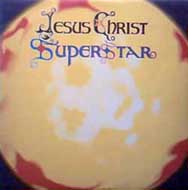 A girl with a talent for singing, who leaves her home town, becomes a star and then finds herself trapped by fame – that was the simple plot that formed the basis for ABBA’s mini-musical The Girl With The Golden Hair. This creation marked the first few steps for ABBA’s song writing team of Benny Andersson and Björn Ulvaeus in realising a dream they had nursed since before the ABBA era. That dream was to write a full-scale musical. Ever ambitious and forward-looking, they felt even in those early days that at some point, this would be the logical next step in their development as composers. Telling a story with the aid of music and lyrics, and being able to expand beyond the restrictive format of the three-minute pop song, was a highly interesting challenge for them.
A girl with a talent for singing, who leaves her home town, becomes a star and then finds herself trapped by fame – that was the simple plot that formed the basis for ABBA’s mini-musical The Girl With The Golden Hair. This creation marked the first few steps for ABBA’s song writing team of Benny Andersson and Björn Ulvaeus in realising a dream they had nursed since before the ABBA era. That dream was to write a full-scale musical. Ever ambitious and forward-looking, they felt even in those early days that at some point, this would be the logical next step in their development as composers. Telling a story with the aid of music and lyrics, and being able to expand beyond the restrictive format of the three-minute pop song, was a highly interesting challenge for them.
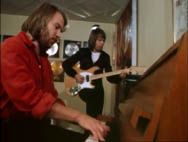 Neither Björn nor Benny had been great fans of musicals in their younger days. “But then I heard Tim Rice and Andrew Lloyd Webber’s Jesus Christ Superstar”, recalls Benny in the book Mamma Mia! How Can I Resist You? “Stig Anderson, who was managing us and who was one of the leading music publishers in Sweden, had been sent the record long before it actually came out. I got hold of a copy and thought it was astonishing.” First released as a so-called concept album in 1970, the musical was very different to most earlier musicals in that it married a serious, historical subject such as Jesus Christ to modern pop and rock music. Explains Björn: “[When] Benny and I were talking about how to stretch ourselves, the success of Jesus Christ Superstar was hovering in the background. We thought, ‘This is fascinating. Why don’t we try this, why don’t we dabble in this for a while?’”
Neither Björn nor Benny had been great fans of musicals in their younger days. “But then I heard Tim Rice and Andrew Lloyd Webber’s Jesus Christ Superstar”, recalls Benny in the book Mamma Mia! How Can I Resist You? “Stig Anderson, who was managing us and who was one of the leading music publishers in Sweden, had been sent the record long before it actually came out. I got hold of a copy and thought it was astonishing.” First released as a so-called concept album in 1970, the musical was very different to most earlier musicals in that it married a serious, historical subject such as Jesus Christ to modern pop and rock music. Explains Björn: “[When] Benny and I were talking about how to stretch ourselves, the success of Jesus Christ Superstar was hovering in the background. We thought, ‘This is fascinating. Why don’t we try this, why don’t we dabble in this for a while?’”
A simple plot
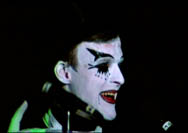 When ABBA were planning their first major tour, scheduled to take place in Europe and Australia between January and March 1977, Björn and Benny were provided with the perfect opportunity to dip their toes in stage-musical waters. Since they wanted the tour to offer something more than just a string of hits, they got the idea to put together a mini-musical. The plan was to make it a 20–25-minute extravaganza that could end the main show in a spectacular way, before the encores. After finishing work on the Arrival album, which was released in October 1976, Björn and Benny began putting together what was to become The Girl With The Golden Hair. By necessity, the plot had to be simple, while still lending itself to dramatic story-telling. Quite possibly, there was also the thought of keeping it within the world of music, which the whole group could relate to. What they finally came up with was a storyline “about a girl wanting to get famous, becoming famous and then seeing the downside of it,” as Björn puts it.
When ABBA were planning their first major tour, scheduled to take place in Europe and Australia between January and March 1977, Björn and Benny were provided with the perfect opportunity to dip their toes in stage-musical waters. Since they wanted the tour to offer something more than just a string of hits, they got the idea to put together a mini-musical. The plan was to make it a 20–25-minute extravaganza that could end the main show in a spectacular way, before the encores. After finishing work on the Arrival album, which was released in October 1976, Björn and Benny began putting together what was to become The Girl With The Golden Hair. By necessity, the plot had to be simple, while still lending itself to dramatic story-telling. Quite possibly, there was also the thought of keeping it within the world of music, which the whole group could relate to. What they finally came up with was a storyline “about a girl wanting to get famous, becoming famous and then seeing the downside of it,” as Björn puts it.
By early December 1976 at least one of the songs for the mini-musicals had been completed. In a feature in the Swedish news show Rapport, filmed on December 6, Björn and Benny treated the viewers to a few instrumental bars of the chorus of ‘Thank You For The Music’. This was, in all likelihood, the first public glimpse of this famous song. Today, this performance can be viewed on the DVD included with the Deluxe Edition of the Arrival album. There was to be no dialogue in the musical, and yet the music and lyrics alone were not quite enough to carry the plot forward. The solution arrived in the shape of a narrator, presented like a heavily made-up Mephisto-like character, who would appear between the songs to explain the plot points. The part of the narrator went to 24-year-old British actor Francis Matthews of the Royal Shakespeare Company.
The journey from Heaven to Hell
When the tour began in Oslo, Norway, on January 28, 1977, every piece was in place for the mini-musical. Since only those who attended the concerts more than 30 years ago have ever seen The Girl With The Golden Hair in full, here is a detailed depiction of its structure.
The narrator would begin with an introduction in rhymed verse, concluding with the couplet: “And all of a sudden you see her, she’s there! / The girl with the golden hair”. Then Agnetha entered the stage. She and Frida had both been decked out with identical costumes and identical golden wigs, to underline the fact that they were both playing one and the same character. Agnetha’s first song was ‘Thank You For The Music’. However, this version of the song was a bit more loosely structured and cabaret-like than the studio-interpretation recorded several months later. Also, in this original mini-musical version there were a few differences in the lyrics here and there. The greatest dissimilarity was perhaps in the four final lines of the second verse, which originally went thus:
Mother says I was a dancer before I could walk
She says I began to sing long before I could talk
And now I’m so grateful to all of the guys
Who bring the sweet memories into our lives
I’m in love with them all
I mean Brian, Chuck, John and Paul
“Brian” was, of course, Brian Wilson, the genius song writer and producer of The Beach Boys, and Beatles members John Lennon and Paul McCartney were also saluted in this couplet – Benny and Björn have often cited both Brian Wilson and the team of Lennon and McCartney as primary influences on their work. “Chuck”, finally, is a nod to 1950s rock’n’roll pioneer Chuck Berry, famous for rock standards such as ‘Johnny B. Goode’.
After ‘Thank You For The Music’, the narrator returned, setting the scene for the next song by describing the girl’s ambitions and her doubts as to whether she should really leave her home town for a career in music: “Uncertainty is starting / She’s feeling a little bit down.” Then Frida entered the stage to sing ‘I Wonder (Departure)’. After this big ballad the narrator would be back again. With the aid of interjections from Abba’s female trio of backing vocalists he would describe the claustrophobic experience of the girl getting more success than she bargained for: “She got what she wanted, and yet / She feels like a marionette!” Agnetha and Frida then performed ‘I’m A Marionette’.
This third number in the mini-musical segued into an uptempo, rhythmic instrumental section wherein the girls performed a dance routine of some length. Then, without so much as a short break, the fourth and final number would begin. During the intro, the narrator uttered his final words: “The journey from Heaven to Hell / Get on the carousel!” In a sort of “vocal duel” with the backing singers, Agnetha and Frida then performed the rousing uptempo song ‘Get On The Carousel’. In it, the girl desperately cries that she wants to leave the nightmare she’s finding herself in, to get off the carousel although the vocal chorus insists that she should get on it. The Girl With The Golden Hair was rounded off by short reprises of ‘I’m A Marionette’ and ‘I Wonder (Departure)’, before getting back to a bit more of ‘Get On The Carousel’. After approximately 25 minutes, the mini-musical then ended.
The Girl With The Golden Hair was certainly a daring experiment for Abba, in more ways than one, and opinions about the success of the venture are divided. When there were subsequent suggestions that the mini-musical should be extended into a full-length work, Björn admitted that “the story wasn’t quite good enough for that”. And today Benny even questions the wisdom of subjecting a largely pre-teen audience to what was after all a fairly gloomy depiction of stardom, not to mention the fact that all four songs were brand new and therefore completely unfamiliar. “I suspect the whole thing was probably quite weird for the audiences: they just wanted to see ABBA,” he states in the Mamma Mia! book, adding that “it was not a good choice for a tour.”
An intriguing first glimpse
 Whatever the historical judgment on the mini-musical itself, it certainly contained a number of good tunes. When ABBA began sessions for their new album, two and a half months after the tour had ended, it was self-evident that those songs should be recorded for the album. However, there was one omission. ‘Get On The Carousel’, while an effective stage number, had a somewhat repetitive structure and was very much dependent on the visual action that accompanied it. Therefore, it was decided that it should not be featured on the album. But, in the tried and tested methods of the Andersson/Ulvaeus song writing partnership, the best bit of the song was used for a brand new tune to be included on ABBA – The Album. The melody for the section in ‘Hole In Your Soul’ that starts “Aha, you paint your world and use all colours” was lifted straight from ‘Get On The Carousel’.
Whatever the historical judgment on the mini-musical itself, it certainly contained a number of good tunes. When ABBA began sessions for their new album, two and a half months after the tour had ended, it was self-evident that those songs should be recorded for the album. However, there was one omission. ‘Get On The Carousel’, while an effective stage number, had a somewhat repetitive structure and was very much dependent on the visual action that accompanied it. Therefore, it was decided that it should not be featured on the album. But, in the tried and tested methods of the Andersson/Ulvaeus song writing partnership, the best bit of the song was used for a brand new tune to be included on ABBA – The Album. The melody for the section in ‘Hole In Your Soul’ that starts “Aha, you paint your world and use all colours” was lifted straight from ‘Get On The Carousel’.
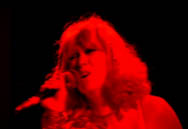 During the summer 1977 sessions for ABBA – The Album, the remaining three mini-musical songs were recorded. The first was perhaps also the most famous: ‘Thank You For The Music’, which by then had acquired its final lyrics, although it was first recorded in a more staccato-like arrangement. This first attempt is today known as the “Doris Day Version”, as an acknowledgment of Agnetha’s inspiration for her vocal interpretation. After a re-think by the group, ‘Thank You For The Music’ was then re-recorded in the familiar version. ‘I Wonder (Departure)’ and ‘I’m A Marionette’ were both recorded in arrangements that were almost identical to how they had been performed on stage.
During the summer 1977 sessions for ABBA – The Album, the remaining three mini-musical songs were recorded. The first was perhaps also the most famous: ‘Thank You For The Music’, which by then had acquired its final lyrics, although it was first recorded in a more staccato-like arrangement. This first attempt is today known as the “Doris Day Version”, as an acknowledgment of Agnetha’s inspiration for her vocal interpretation. After a re-think by the group, ‘Thank You For The Music’ was then re-recorded in the familiar version. ‘I Wonder (Departure)’ and ‘I’m A Marionette’ were both recorded in arrangements that were almost identical to how they had been performed on stage.
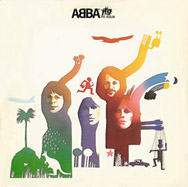 The very first mini-musical song to be released on record was a live version of ‘I Wonder (Departure)’, recorded in Sydney, Australia, and featured as the B-side to the single ‘The Name Of The Game’ in October 1977. The studio-recorded versions of the three songs from The Girl With The Golden Hair – presented as “3 scenes from a mini-musical” – were then issued on ABBA – The Album in December 1977. For those who are curious about ‘Get On The Carousel’, a lengthy section of the song can be heard in ABBA – The Movie, which premiered in tandem with the album release. The movie also features the original live version of ‘I’m A Marionette’; in the film it was partly used to illustrate the hectic life that besets pop mega-stars such as ABBA when they go on tour.
The very first mini-musical song to be released on record was a live version of ‘I Wonder (Departure)’, recorded in Sydney, Australia, and featured as the B-side to the single ‘The Name Of The Game’ in October 1977. The studio-recorded versions of the three songs from The Girl With The Golden Hair – presented as “3 scenes from a mini-musical” – were then issued on ABBA – The Album in December 1977. For those who are curious about ‘Get On The Carousel’, a lengthy section of the song can be heard in ABBA – The Movie, which premiered in tandem with the album release. The movie also features the original live version of ‘I’m A Marionette’; in the film it was partly used to illustrate the hectic life that besets pop mega-stars such as ABBA when they go on tour.
Although the story of The Girl With The Golden Hair was destined to start and end within the space of one year, it provides an intriguing first glimpse into the world of musicals that was to become so important for Björn and Benny after the ABBA era. And, not least importantly, it produced one of their most famous and best-loved songs in the shape of ‘Thank You For The Music’.
NOTE: The Deluxe Edition of ABBA – The Album, released in 2007, contains not only the three studio-recorded songs from The Girl With The Golden Hair, but among its bonus tracks can be found the first take of ‘Thank You For The Music’, the live version of ‘I Wonder (Departure)’, along with ‘Gracias Por La Música’, the Spanish version of ‘Thank You For The Music’.

